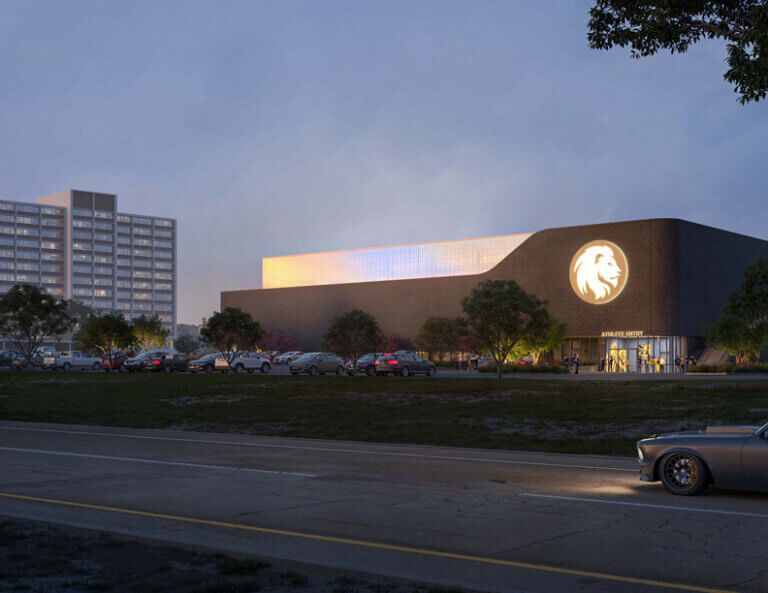
Working on a major renovation for the Alabama jewel in NASCAR’s crown had to be challenging, but Hoar Construction recently completed a Talladega Transformation in just five months.
Planners wanted the track’s Infield Project done to coincide with the Talladega Superspeedway’s 50th anniversary and NASCAR Playoff doubleheader weekend, Oct. 11-13.
The $50 million effort involved a major infield makeover including a more than 140,000-square-foot social and engagement area — the fan-friendly Talladega Garage Experience. At the project’s centerpiece in the Garage Experience is the 35,000-square-feet Big Bill’s Open Air Club, featuring an 80-foot stainless steel bar, along with a variety of seating areas, a host of food vendors featuring a nothing-over-$4 menu, a polished concrete floor and a 41-foot diagonal video screen.
Fans who opt for a Garage Experience admission received “up-close” access, just feet away from where the race cars were being prepped by the race teams. Big Bill’s is lined on both sides with two garages that house the top 22 drivers (11 in each) in NASCAR’s premier series.
There’s also a new victory lane area for fans to celebrate with race winners, along with two other garages to house the rest of the 40-car field, inspection stations, three additional concession stands as well as garage offices. Talladega also added more than 200 RV spaces along the inside of the Alabama Gang Superstretch, complete with water and power hookups in a gated community; the Finish Line Premium RV area — a gated community with full hookups; a race operations building, and a two-lane, oversize vehicle tunnel to allow 24-hour entry and exit from the infield.
Hoar started demolishing five older buildings following the checkered flag of the Geico 500 on April 28, 2019. The work included remodeling three structures, including the media center, and construction of nine new buildings, all completed in September. Most of the buildings were pre-engineered metal buildings and were in fabrication before the project even broke ground.
Mechanical and electrical equipment also was specified and in production prior to groundbreaking.
“We had to hit the ground running from day one,” said Gary Merriman, project superintendent. “There was no time for delays, because the date of the race couldn’t change.

